Sensor Sweep: Werewolves of London, James Bond, John Thunstone, The Dare
Monday , 2, November 2020 Sensor Sweep 3 CommentsPublishing (Kairos): The Strand is far from the only bookstore to fall on hard times this year. Barnes & Noble, the last big book retail chain, faces mounting pandemic-related difficulties compounded by their own bad decisions.
I loathe Amazon as much as the next person who relies on it. But on recent visits to The Strand I have left empty-handed and had to revert to the dreaded competitor-destroying behemoth. Because there are very specific problems with The Strand and if it doesn’t make it to its century then it will be its own fault.
Cinema (Film School Rejects): If you sit down and watch all twenty-four  James Bond films, patterns invariably emerge. And we’re not just talking about enduring cocktail preferences or the odd recurring side character. Rather, when you look at the visual language of all the Bond films, you’ll see consistent trends: a preference for shadows, a love of a long take, and an undeniable sense of cool. That’s precisely what makes Bond films so special: they have managed to evolve over nearly sixty years while still retaining what makes Bond, Bond.
James Bond films, patterns invariably emerge. And we’re not just talking about enduring cocktail preferences or the odd recurring side character. Rather, when you look at the visual language of all the Bond films, you’ll see consistent trends: a preference for shadows, a love of a long take, and an undeniable sense of cool. That’s precisely what makes Bond films so special: they have managed to evolve over nearly sixty years while still retaining what makes Bond, Bond.
Art (DMR Books): Apparitions was Wrightson in his prime. The Edgar Allan Poe Portfolio sees Bernie transitioning from his comic book roots into the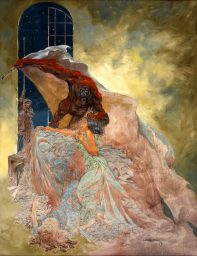 master of macabre art who would later create some of the greatest Frankenstein illustrations ever put to paper. There were a few birthing pangs involved.. While the plates below are still Bernie-frikkin’-Wrightson, some of them are a bit hard to suss out. Wrightson doesn’t appear quite as in control of his brush as in later years. Also, I would’ve skipped “The Murders in the Rue Morgue” and gone for something a bit more horrific. However, don’t let my quibbles dissuade you; these are early gems from the brush of Bernie Wrightson and I am very glad to be able to view them in digital form, at least.
master of macabre art who would later create some of the greatest Frankenstein illustrations ever put to paper. There were a few birthing pangs involved.. While the plates below are still Bernie-frikkin’-Wrightson, some of them are a bit hard to suss out. Wrightson doesn’t appear quite as in control of his brush as in later years. Also, I would’ve skipped “The Murders in the Rue Morgue” and gone for something a bit more horrific. However, don’t let my quibbles dissuade you; these are early gems from the brush of Bernie Wrightson and I am very glad to be able to view them in digital form, at least.
Fiction (Author Bob Freeman): I remember being in elementary school, reading my way through Howard and Lovecraft, and looking for that next thing. An older kid on my school bus recommended Manly Wade Wellman’s Silver John stories. And while I enjoyed John the Balladeer, those stories leading me to Wellman’s John Thunstone was where the magic really happened for me. Manly Wade Wellman was a giant. Few authors have influenced me in the way Wellman has. He epitomized the pulp sensibilities I gravitated toward and near everything he touched was Appalachian gold.
Folklore (Christ and Pop Culture): t’s hard to say exactly when the switch got flipped from “witches aren’t even real, you guys” to “witches are everywhere and we need to kill them with fire now,” but it appears to have roughly coincided with the Renaissance. If there was a single trigger, it was the 1485 publication of Malleus Maleficarum, a witch-hunting manual by German inquisitor Heinrich Kramer, the title of which is usually translated as “The Hammer of Witches,” which, yes, is also the name of my metalcore band. In the Maleficarum, Kramer argued that, contrary to church tradition, witches could and did exist, and it was the duty of the church and the state to hunt them down, torture confessions out of them, and then burn them really good.
Cinema (Scifi Movie Page): If questioned about what genre movies are  quintessential eighties classics, several titles come to mind, and any list of titles such as Ghostbusters, Aliens, James Cameron’s masterful sequel, Indiana Jones movies, would automatically include the one and only ‘An American Werewolf In London.’ The werewolf story is an old one, one that summed up would be ‘dog bites man, man becomes a dog.’ It’s a simple story, some versions of which include gypsies and an old curse. It’s basic to gothic horror type stories, and for years and years, that was good enough. John Landis, the creative mind behind this film, approached the story in a new manner.
quintessential eighties classics, several titles come to mind, and any list of titles such as Ghostbusters, Aliens, James Cameron’s masterful sequel, Indiana Jones movies, would automatically include the one and only ‘An American Werewolf In London.’ The werewolf story is an old one, one that summed up would be ‘dog bites man, man becomes a dog.’ It’s a simple story, some versions of which include gypsies and an old curse. It’s basic to gothic horror type stories, and for years and years, that was good enough. John Landis, the creative mind behind this film, approached the story in a new manner.
D&D (Black Gate): Lenard Lakofka has passed away. Lakofka was one of the  early figures in the history of Dungeons and Dragons. He was President of the International Federation of Wargamers when it worked with Gary Gygax to host the very first GenCon. He began play testing the developing Dungeons and Dragons, providing input to Gygax. He created his home campaign, set in the Lendore Isles. His character, Leomund, is a well-known name in D&D history. He wrote articles on D&D for his own magazine; many of which were reprinted in the new Dragon magazine. He edited, and contributed to, the core Advanced Dungeons and Dragons (AD&D) books.
early figures in the history of Dungeons and Dragons. He was President of the International Federation of Wargamers when it worked with Gary Gygax to host the very first GenCon. He began play testing the developing Dungeons and Dragons, providing input to Gygax. He created his home campaign, set in the Lendore Isles. His character, Leomund, is a well-known name in D&D history. He wrote articles on D&D for his own magazine; many of which were reprinted in the new Dragon magazine. He edited, and contributed to, the core Advanced Dungeons and Dragons (AD&D) books.
Cinema (Swordssorcery): Session 9 (2001), directed by Brad Anderson. 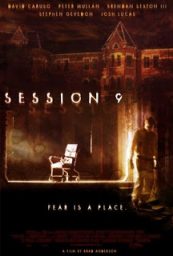 When it all comes together – story, atmosphere, acting – you get something that will you haunt you a long time after the screen goes dark and the house lights come up. Played by Peter Mullan, Gordon Fleming runs a faltering asbestos removal business. In hope of saving it, he takes on a seemingly impossible contract to clean up a massive old asylum in one week instead of the anticipated three.
When it all comes together – story, atmosphere, acting – you get something that will you haunt you a long time after the screen goes dark and the house lights come up. Played by Peter Mullan, Gordon Fleming runs a faltering asbestos removal business. In hope of saving it, he takes on a seemingly impossible contract to clean up a massive old asylum in one week instead of the anticipated three.
Fiction (Rough Edges): August Derleth’s short story “No Light for Uncle Henry” appeared in the March 1943 issue of WEIRD TALES. It was reprinted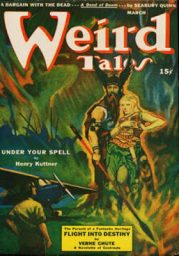 in a couple of Derleth collections, one from Arkham House and one from Battered Silicon Dispatch Box. It’s the first thing I’ve read by Derleth in quite a while, but I enjoyed it. It’s the story of a young man who goes to live with a bachelor uncle in a small Midwestern town. Another uncle had lived in the same house until recently, when he died. The surviving uncle gives the young protagonist strict instructions that no light is to be taken into the dead uncle’s former bedroom . . . but we wouldn’t have a story if the guy didn’t do exactly that, would we? What does he find when he steps into that deserted room and lights a match?
in a couple of Derleth collections, one from Arkham House and one from Battered Silicon Dispatch Box. It’s the first thing I’ve read by Derleth in quite a while, but I enjoyed it. It’s the story of a young man who goes to live with a bachelor uncle in a small Midwestern town. Another uncle had lived in the same house until recently, when he died. The surviving uncle gives the young protagonist strict instructions that no light is to be taken into the dead uncle’s former bedroom . . . but we wouldn’t have a story if the guy didn’t do exactly that, would we? What does he find when he steps into that deserted room and lights a match?
Cinema (Kairos): Back in the 80s, an action movie by a young director with only two films under his belt was shot at a venerable British studio with a motley cast of Oscar winners and veterans of 60s schlock from Hammer/American International. Dismissed as B movie camp by the press, and even members of the production, it nonetheless became a cultural phenomenon that launched a top-earning franchise and set new rules that govern Hollywood to this day. At this point, you may be thinking of a certain space opera. But that was in the 70s, and in another genre, and besides, the Mouse is dead.
Fiction (Story of the Week): That hope, however, was soon dashed when it became apparent that nineteen-year-old Virginia Poe was suffering from “consumption,” or—to give it the name coined just three years earlier—tuberculosis. “The renewed and hopeless illness of my wife, ill health on my own part, and pecuniary embarrassments have nearly driven me to distraction,” he wrote to another friend later in the year. “Mrs Poe is again dangerously ill with hemorrhage from the lungs. It is folly to hope.” She would be dead within five years. In April Poe resigned from his editorship at Graham’s Lady’s and Gentleman’s Magazine; “the namby-pamby character of the Magazine” frustrated him (he despised the fashion articles and illustrations) and the “salary, moreover, did not pay me for the labor which I was forced to bestow.”
Reading (Jon Mollison): A reader of fantasy should endeavor to read both wide and deep, to be sure. Hence, a reader who has read 100 classic titles but missed a few of the biggest names isn’t necessarily a poser. A guy who skipped Tolkien but has read all the works of the Immortal REH and a tenth of the copious output of MegaBoss and OG blockbuster author Eddie Rice Burroughs and a smattering of Dune and Homerand Glen Cook and Lieber and maybe even Anderson and modern drek like Gaiman, Abercrombie, and Rape Rape Martin would have enough of a grasp on the genre to hold his own.
RPG (Rlyeh Reviews): The Dare is a Call of Cthulhu scenario which very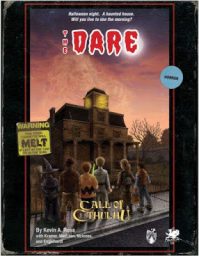 much wears its influences on its sleeve. It is a horror scenario of Cosmic Horror, so obviously H.P. Lovecraft and Call of Cthulhu. It is a haunted house scenario, so obviously any number of haunted house horror films and short stories, but also—just a little bit, ‘The Haunting’, the classic introductory scenario for Call of Cthulhu, which goes all of the way back to 1980 and Call of Cthulhu, First Edition.
much wears its influences on its sleeve. It is a horror scenario of Cosmic Horror, so obviously H.P. Lovecraft and Call of Cthulhu. It is a haunted house scenario, so obviously any number of haunted house horror films and short stories, but also—just a little bit, ‘The Haunting’, the classic introductory scenario for Call of Cthulhu, which goes all of the way back to 1980 and Call of Cthulhu, First Edition.
Fiction (Grognardia): J. Eric Holmes has deservedly received a great deal of attention within the old school renaissance for his role as editor of the 1977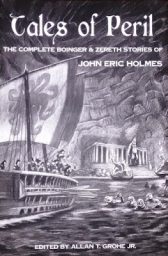 Dungeons & Dragons Basic Set. For many gamers of a certain age, myself included, that Basic Set was our introduction to both D&D and to the larger hobby of roleplaying. I feel I owe Dr Holmes a great debt, which is why I have regularly drawn attention to him and his large body of work (though not to the same extent as Zach Howard, whose excellent blog is a veritable shrine to all things Holmesian).
Dungeons & Dragons Basic Set. For many gamers of a certain age, myself included, that Basic Set was our introduction to both D&D and to the larger hobby of roleplaying. I feel I owe Dr Holmes a great debt, which is why I have regularly drawn attention to him and his large body of work (though not to the same extent as Zach Howard, whose excellent blog is a veritable shrine to all things Holmesian).
Fiction (Digital Bibliophilia): In 2012, Hard Case Crime published Robert 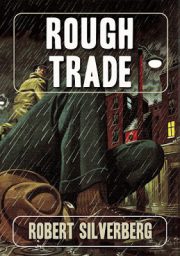 Silverberg’s novelette Blood on the Mink, packaged together with a couple of short stories (Dangerous Doll and One Night of Violence). These stories had been written by Silverberg in the late fifties and early sixties for pulp magazines of the time. The success of the HCC paperback prompted a new interest in the authors crime back catalogue, and so in 2017, British independant publishing house PS Publishing release a limited run of his stories from the same period as Rough Trade.
Silverberg’s novelette Blood on the Mink, packaged together with a couple of short stories (Dangerous Doll and One Night of Violence). These stories had been written by Silverberg in the late fifties and early sixties for pulp magazines of the time. The success of the HCC paperback prompted a new interest in the authors crime back catalogue, and so in 2017, British independant publishing house PS Publishing release a limited run of his stories from the same period as Rough Trade.
Science Fiction (Pulp Fiction Reviews): We first discovered sci-fi writer Edmond Hamilton while in high school and immediately became a fan of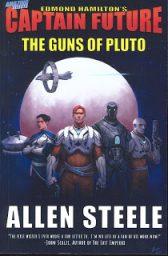 his unique action/adventure stories. Unlike the hard science fiction of writers like Isaac Asimov and Arthur C. Clarke, Hamilton gave us Flash Gordon – Buck Rogers style tales we later learned to identify as “space operas.” As time went on we read more and more of Hamilton’s work but these were the 60s and we simply were unfamiliar at that time with his sci-fi pulp hero, Captain Future. The closest we came to that part of his legacy was when he created the Star Wolf series for a paperback outfit. We find it odd that in his bio at the back of this volume, that particular series is totally forgotten.
his unique action/adventure stories. Unlike the hard science fiction of writers like Isaac Asimov and Arthur C. Clarke, Hamilton gave us Flash Gordon – Buck Rogers style tales we later learned to identify as “space operas.” As time went on we read more and more of Hamilton’s work but these were the 60s and we simply were unfamiliar at that time with his sci-fi pulp hero, Captain Future. The closest we came to that part of his legacy was when he created the Star Wolf series for a paperback outfit. We find it odd that in his bio at the back of this volume, that particular series is totally forgotten.
Fiction (Old Style Tales): Washington Irving’s The Devil and Tom Walker: A Two-Minute Summary and a Deep Analysis: Irving’s most famous horror story – one which makes no excuses for its supernaturalism – comes, as most of his masterpieces do, from a German tradition. In this case it is the story of Doctor Faust. Desperately greedy for knowledge, this pseudo-historical alchemist was said to have sold his soul to the Dark One in exchange for wisdom, knowledge, and magical abilities.
Japanese Cinema (Film School Rejects): Cinema is an international art 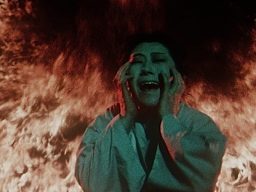 form, but some countries have a knack for specializing in certain genres better than others. When it comes to horror, Japan (along with South Korea) is hard to beat, and it’s been that way for decades. That’s because they aren’t afraid to make even the most mainstream efforts original, challenging, thought-provoking, and daring. The J-horror boom of the 1990s might have put the country’s scare fare on the map, but the reality is that Japanese cinema produced some real terrifying gems long before the rest of the world took notice.
form, but some countries have a knack for specializing in certain genres better than others. When it comes to horror, Japan (along with South Korea) is hard to beat, and it’s been that way for decades. That’s because they aren’t afraid to make even the most mainstream efforts original, challenging, thought-provoking, and daring. The J-horror boom of the 1990s might have put the country’s scare fare on the map, but the reality is that Japanese cinema produced some real terrifying gems long before the rest of the world took notice.
Military History (Weapons and Warfare): Despite their limited usefulness, rifles still occasionally managed to find their way into battle-and some of history’s most lucrative targets were among their first. Rifles were not adopted for general military issue, and with good reason: rifle-armed infantrymen would have been at a tremendous disadvantage. Reloading a snug-fitting rifled bore was a tedious process, taking about two minutes. At such a slow rate of fire, given the rifle’s typical range-perhaps 200 yards-a line of riflemen would have been bombarded by 25 volleys of smoothbore musket fire and a bayonet assault before they could load for a second shot. And the cost!
Fiction (DMR Books): Tim Willocks’ birthday has rolled around again. I’ve 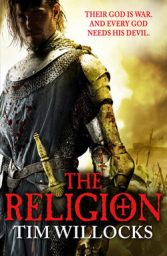 had my hardcover copy of The Religion at my bedside the last couple of weeks, doing fairly random rereads. What strikes me now, just as it did in the winter of 2011, is just how quotable the novel is. Like The Iliad–to which I’ve compared it on numerous occasions–The Religion has sentences and passages on nearly every page which can stand on their own as things of worth. Sometimes bloody, sometimes beautiful, sometimes philosophical. Often all three at once.
had my hardcover copy of The Religion at my bedside the last couple of weeks, doing fairly random rereads. What strikes me now, just as it did in the winter of 2011, is just how quotable the novel is. Like The Iliad–to which I’ve compared it on numerous occasions–The Religion has sentences and passages on nearly every page which can stand on their own as things of worth. Sometimes bloody, sometimes beautiful, sometimes philosophical. Often all three at once.
Westerns (Rough Edges): Eugene Cunningham is one of my favorite Western writers, but it had been a while since I read anything by him, so I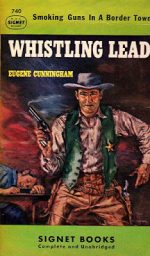 decided to remedy that. WHISTLING LEAD was publlshed in hardcover by Houghton Mifflin in 1936 and reprinted in paperback by Signet in 1949, the edition I read. (A first printing, by the way.) It’s dedicated to John F. Byrne, an editor at Fiction House during the era when Cunningham was selling a great deal to the pulps they published.
decided to remedy that. WHISTLING LEAD was publlshed in hardcover by Houghton Mifflin in 1936 and reprinted in paperback by Signet in 1949, the edition I read. (A first printing, by the way.) It’s dedicated to John F. Byrne, an editor at Fiction House during the era when Cunningham was selling a great deal to the pulps they published.
Horror (Too Much Horror Fiction): One of horror’s great scenes is when Jonathan Harker is confronted by three vampire women—the “weird 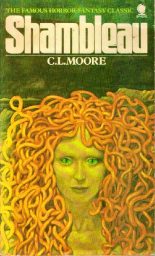 sisters”—in Dracula. As one of them kneels at Harker’s side, he hears the churning sound of her tongue as it licked her teeth and lips, then he closes his eyes in langourous ecstacy, waiting for the moment when her sharp white teeth will pierce the flesh on his neck… Wonderful stuff (till of course the Count rushes in and ruins this tender moment). And I thought of this bit of sexual dread when I first encountered Catherine L. Moore’s famous 1933 pulp horror/science fiction story, “Shambleau.”
sisters”—in Dracula. As one of them kneels at Harker’s side, he hears the churning sound of her tongue as it licked her teeth and lips, then he closes his eyes in langourous ecstacy, waiting for the moment when her sharp white teeth will pierce the flesh on his neck… Wonderful stuff (till of course the Count rushes in and ruins this tender moment). And I thought of this bit of sexual dread when I first encountered Catherine L. Moore’s famous 1933 pulp horror/science fiction story, “Shambleau.”
Where would you start with the John Thunstone series? Please recommend a volume.
Also, have you read or reviewed Gary Gygax’s own fiction? I’ve read a few short stories, and while they were derivative, they were pretty good. D&d is a fundamentally derivative medium, I suppose.
-
Almost all of the Thunstone tales can be found in LONELY VIGILS from Shadowridge Press. Plus, it also contains most of the Judge Pursuivant stories, which are set in the same universe as the Thunstones. The Judge and Thunstone are buddies. Last I knew, it was still in print. An excellent value.
Thanks!